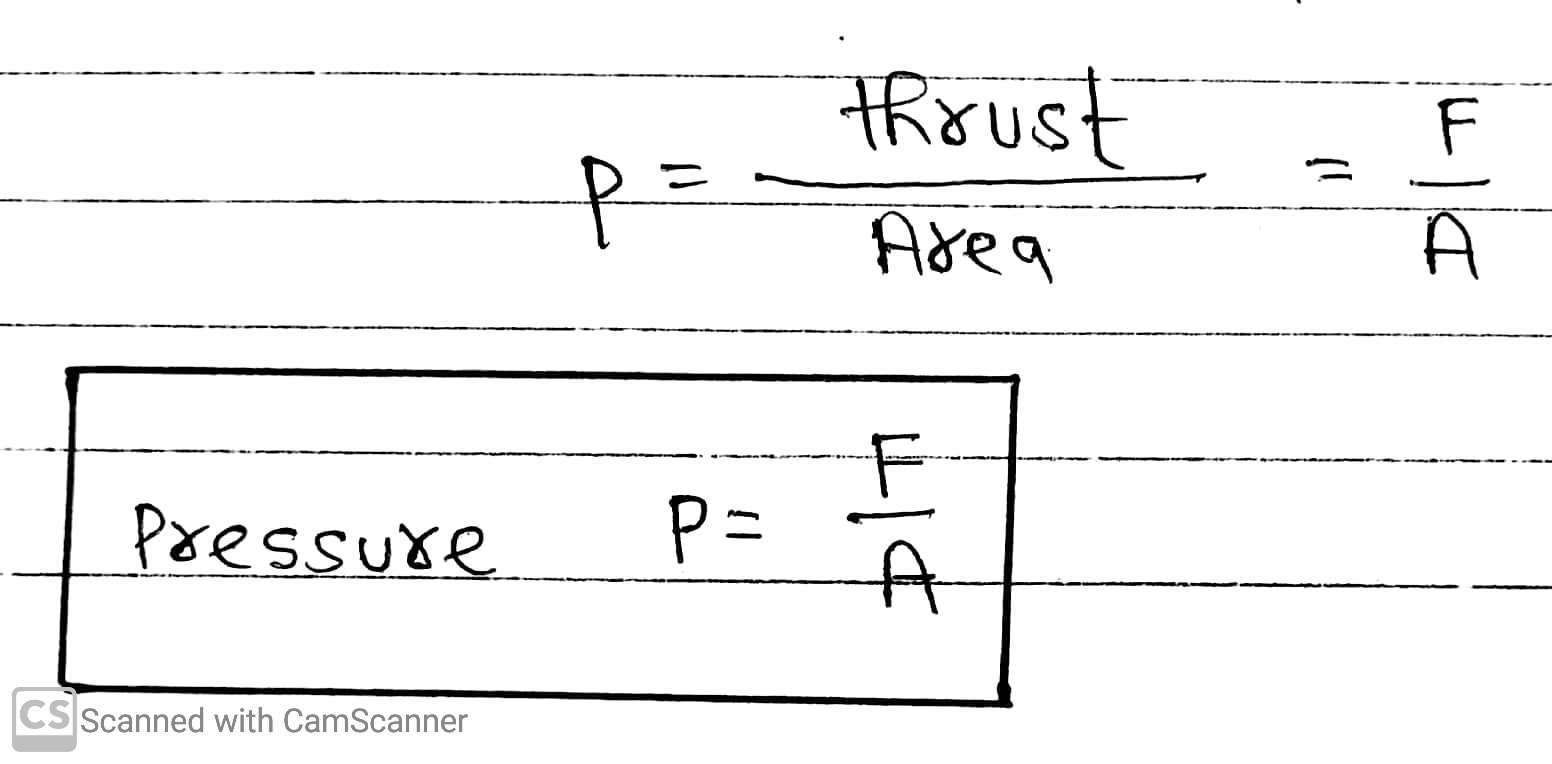The pressure of liquid at a point is the thrust (or normal force) exerted by the liquid at rest per unit area around that point.
If the total force F acts normally over a flat area A, then the pressure is

If the force is not distributed uniformly over the given surface, the pressure will be different at different points. If a force ∆F acts normally on a small area ∆A surrounding a given point, then pressure at that point will be

The unit of pressure is dyne/cm² in CGS system and N/m² or Pascal in SI system and dimensional formula of pressure is [ML⁻¹T⁻²].
Pressure of 1 N/m² is called 1 Pascal in the honour of the French Scientist Blaise Pascal (1623-1662) who carried out the pioneering studies on fluid pressure.
1 Pa or 1 N/m² = 10 dyne/cm²
The another common unit of pressure is atmosphere(atm)
1 atm is defined as the pressure exerted by the atmosphere at sea level.
1 atm = 1.013×10⁵ Pa
Pressure is a scalar quantity, because liquid pressure at a particular point in liquid has some magnitude in all directions. This shows that a definite direction is not associated with liquid pressure.
- A sharp Knife cuts better than a blunt one.
- Camel walks easily on sand while it is difficult to walk on a sand for man.
- Railway tracks are laid on large sized wooden or iron sleepers.
- A sharp needle peers the skin easily but not a dull needle although the force applied in both the cases is the same.
